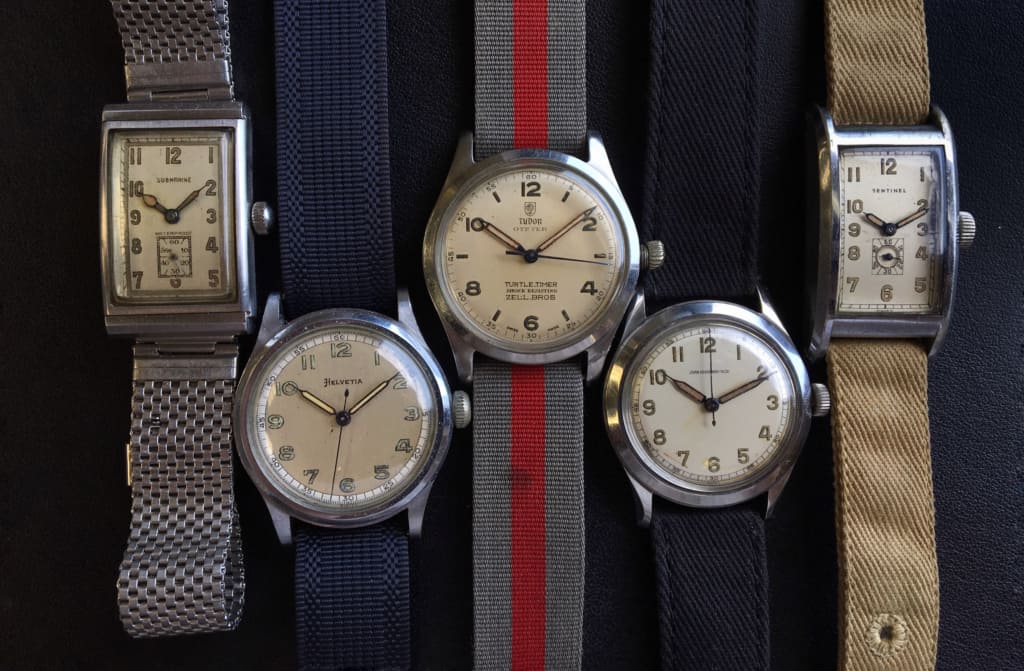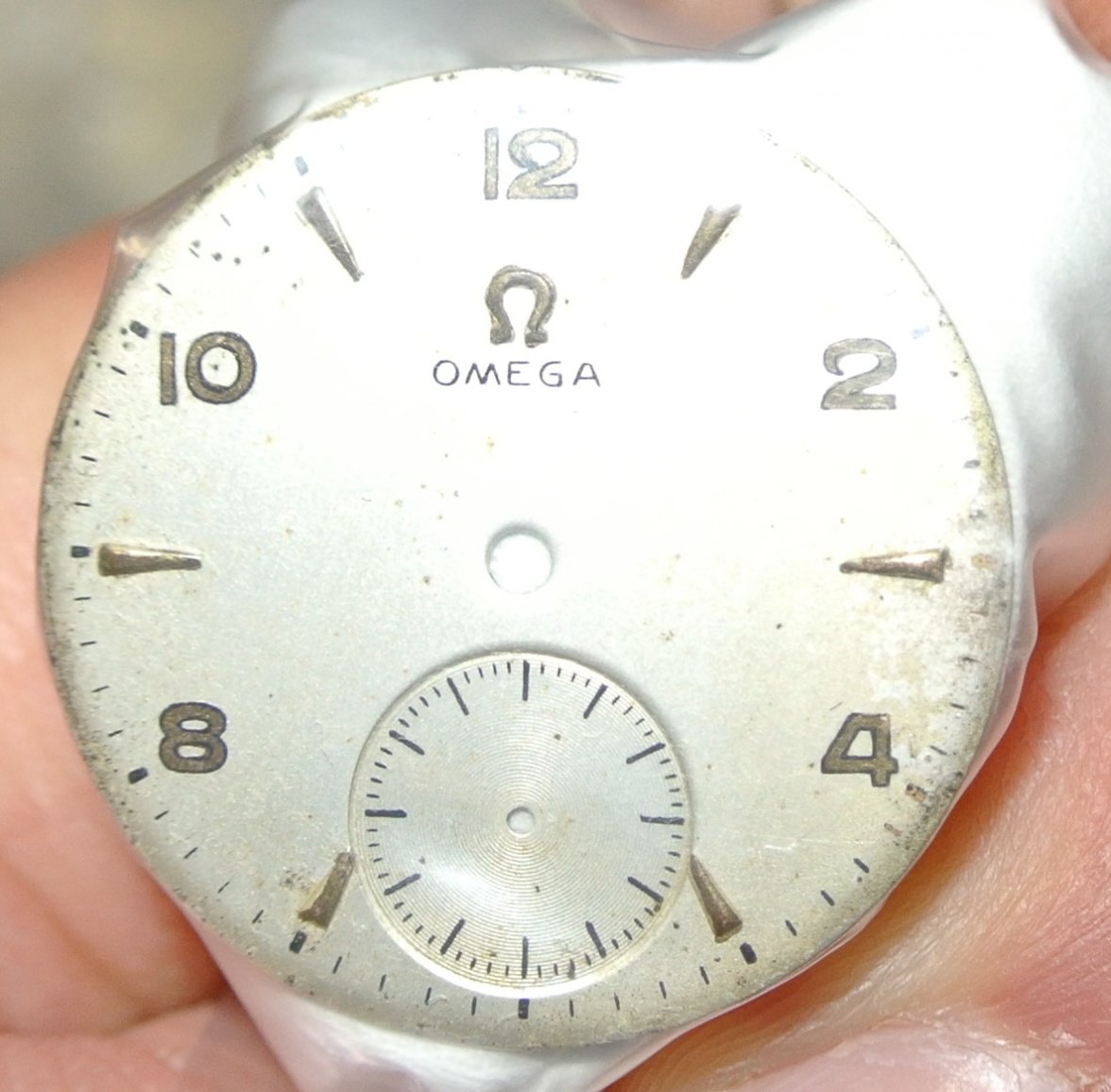

In both 3 examples we see that the hands have also been chanced during a service by Rolex to later smaller ones, meaning that all 3 of them had a water problem back in the days and the original radium hands where chanced to later tritium ones, hence the different in color of the luminous.
#Radium dials cracked#
This particular SCOC small crown 5508 is almost all over damaged and the grooves have become very deep… And another cracked one. My believe is that the dials have been stored for a long time at a dry place and that this has cracked the surface… Yet another example of cracked surface. Moisture and condens will be sucked up by the luminous and make it chance color to dark and ugly, then it will destroy the top layer of the dial.įrom the front hardly visible but once you turn the dial slightly you notice the infrastructure of cracks. Again, the luminous on the dial and hands, are the condition meter showing you what happened over the years with the watch. So if moisture enters the case, it will damage the surface and leave little black stains on the lume dots, as you can see below.
 1964 – 1967, The new generation tritium luminous got added on glossy dials, signing chanced from “Swiss” to “Swiss – T revue-watch-around-herbst-2015-winter-2016-leuchten-in-der-nacht-apzīelow a Zeller Stylograph, the tool to apple the luminous to the dial by hand…. 1963 – 1964, “Transitional” underline of which Rolex switched from Radium to Trtium, delivered dials are “swiss” signed but laminated with tritium. 1960 – 1963, The pre ‘Transitional” period with “Exclamation” mark and due to the starting international regulation, again less radioactive luminous. 1957 – 1960, When Rolex lowered radiation and chanced dial printing from 1 to 2 colored print and enhanced the lacquer to a more glossy variant. 1953 – 1956, When Rolex introduced the world their sports / utility / tool watch concept with radium Submariner, TOG, Explorer & GMT Master. Prior – 1953, The early age of Rolex luminous, used on their pocket watches, early oyster cases, bubble backs and radiomir Panerai’s. As long as you don’t inhale early radium pre 1953, there’s no need to panic, you can wear your vintage Rolex as often as you want, even James Bond knows… At first I like to start with the overview of the approximate date of luminous used by the Rolex Company: I merely want to make a general overview that’s useful for Rolex collectors to understand the differences of luminous, their used time period, the influence it had on the condition of the dial and what typical details one has to look for when analyzing a vintage Rolex.Īs you could have read earlier in my vintage Rolex Buyers Guide, the luminous in general I see as a “Moisture Meter” or more specific, a “Condition Meter” of which you can determine what has happened inside a Rolex during it’s life.
1964 – 1967, The new generation tritium luminous got added on glossy dials, signing chanced from “Swiss” to “Swiss – T revue-watch-around-herbst-2015-winter-2016-leuchten-in-der-nacht-apzīelow a Zeller Stylograph, the tool to apple the luminous to the dial by hand…. 1963 – 1964, “Transitional” underline of which Rolex switched from Radium to Trtium, delivered dials are “swiss” signed but laminated with tritium. 1960 – 1963, The pre ‘Transitional” period with “Exclamation” mark and due to the starting international regulation, again less radioactive luminous. 1957 – 1960, When Rolex lowered radiation and chanced dial printing from 1 to 2 colored print and enhanced the lacquer to a more glossy variant. 1953 – 1956, When Rolex introduced the world their sports / utility / tool watch concept with radium Submariner, TOG, Explorer & GMT Master. Prior – 1953, The early age of Rolex luminous, used on their pocket watches, early oyster cases, bubble backs and radiomir Panerai’s. As long as you don’t inhale early radium pre 1953, there’s no need to panic, you can wear your vintage Rolex as often as you want, even James Bond knows… At first I like to start with the overview of the approximate date of luminous used by the Rolex Company: I merely want to make a general overview that’s useful for Rolex collectors to understand the differences of luminous, their used time period, the influence it had on the condition of the dial and what typical details one has to look for when analyzing a vintage Rolex.Īs you could have read earlier in my vintage Rolex Buyers Guide, the luminous in general I see as a “Moisture Meter” or more specific, a “Condition Meter” of which you can determine what has happened inside a Rolex during it’s life. 
Today I don’t want to debate the dangers of early radium nor the legal impact radiation had for the swiss watch companies. In specific the turn from using radium to tritium has been discussed in length on vintage Rolex Forums.

A lot has already been written about the impact of the luminous used in wristwatches.








 0 kommentar(er)
0 kommentar(er)
